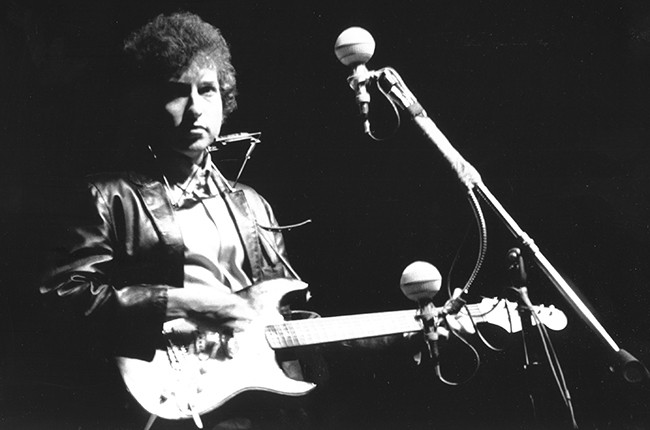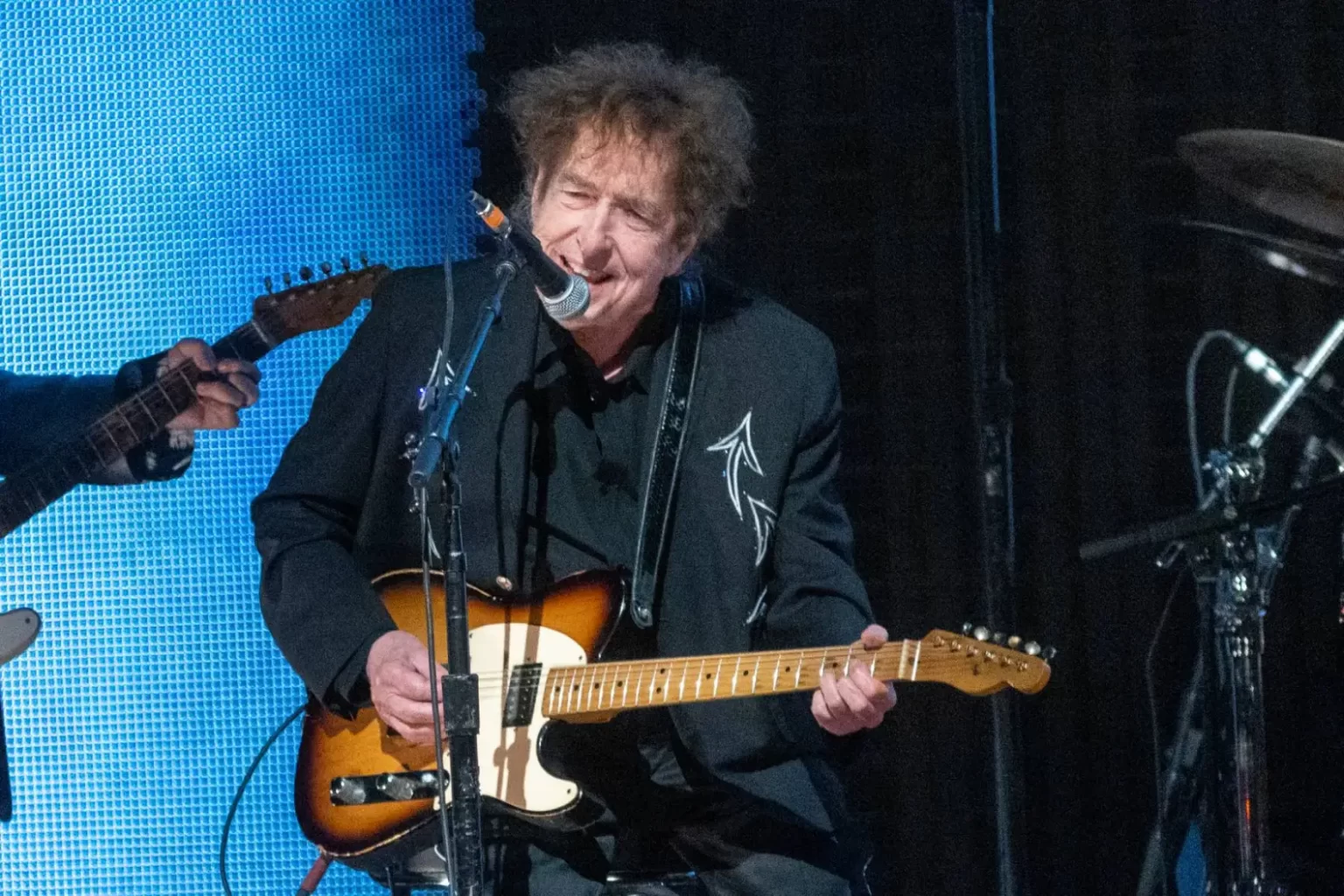As has been noted in the previous three articles in this series, ten Solo Living Artists were inducted into the Folk Americana Roots Hall of Fame (FARHOF) over the weekend of April 19 and 20, 2024 at the Boch Center in Boston. All ten of those Solo Living Artists are worthy of the honor, yet the honor somehow would have been less legitimate if Bob Dylan had not been among the ten inductees.
Born Robert Allen Zimmerman on May 24, 1941, in Duluth, Minnesota, he began performing in coffeehouses during the three semesters he attended the University of Minnesota starting in 1959. He used the stage name of Bob Dylan although originally he was going to spell the last name as Dillon. The story goes that he came upon a book of poems by the Welsh poet Dylan Thomas and decided to use Dylan instead, perhaps finding it to be more avant-garde. He would legally change his name to Robert Dylan on August 9, 1962.
Dylan was originally influenced by rock and roll and even fronted a rock band in high school called Golden Chords. However, he soon found rock music was not enough. The rhythm was great, the catch phrases were clever but ultimately the songs were unrealistic and lacking in meaning. Folk music was more appealing to him. “The songs are filled with more despair, more sadness, more triumph, more faith in the supernatural, much deeper feelings,” he told Cameron Crowe in a 1985 interview.
In 1961, Dylan moved to New York City to meet Woody Guthrie, who had become his idol. He spent a considerable amount of time visiting with Guthrie who was hospitalized with Huntington’s chorea. He also played a number of clubs in Greenwich Village and befriended Ramblin’ Jack Elliott, Guthrie’s protégé.
April of 1961 saw Dylan opening for John Lee Hooker at NYC’s Gerde’s Folk City. A New York Times review of his act by Robert Shelton caught the attention of John Hammond. Hammond signed him to a contract with Columbia Records and produced Dylan’s first album, the self-titled Bob Dylan. Dylan also signed a management contract with Albert Grossman, a sometimes confrontational and protectively loyal individual. Grossman remained Dylan’s manager until 1970.
It seems hard to believe now but Dylan’s first album did not sell well. Executives at Columbia records urged Hammond to drop him. They were glad they didn’t as his second album, The Free Wheelin’ Bob Dylan, contained “Blowin’ In The Wind ” and “A Hard Rain’s A -Gonna Fall” — songs that had already astonished the highbrows in the folk community. Dylan was now seen as someone worthy of respect in the genre, up there with Woody Guthrie, Pete Seeger, and contemporaries like Dave Van Ronk, Fred Neil, and Odetta.
In 1964 and 1965 Dylan upset the folk music purists who had come to revere him. With Another Side Of Bob Dylan he stepped away from the folk protest songs that had endeared him to the folk community and focused on more personal and introspective songs such as “It Ain’t Me Babe” and “All I Really Want To Do.” He seemed to repudiate the protest songs that had been his forte with “My Back Pages.”
Dylan’s follow up album, Bringing It All Back Home, saw him embrace electric instruments for half the album, a seeming return to his rock and roll roots. He played at the Newport Folk Festival on July 25, 1965 backed by the Paul Butterfield Blues Band. He was soundly booed by the folkies in attendance.

These early years of Bob Dylan’s career defined how he would be perceived for the next 60 years. He has remained often brilliant, enigmatic, changeable, inscrutable, and unpredictable. He has embraced folk, rock, and country music and on the face of it was at home in each genre.
His songs have been covered by Peter, Paul, & Mary, The Hollies, Johnny Cash, Joan Baez, Judy Collins, Eric Clapton, Manfred Mann, Olivia Newton John, The Byrds, Nina Simone, Odetta, The Beach Boys, and countless others.
He has been nominated for a Grammy Award 38 times with 10 wins. Dylan has been inducted into the Rock and Roll Hall of Fame, the Nashville Songwriters Hall of Fame, and the Songwriters Hall of Fame. President Bill Clinton presented him with a Kennedy Center Honor in 1997. President Barack Obama awarded him the Presidential Medal Of Freedom in May 0f 2012. France awarded him the Légion d’Honneur, its highest honor, in November 2013. In February 2015, Dylan accepted the MusiCares Person of the Year award from the National Academy of Recording Arts and Sciences, in recognition of his philanthropic and artistic contributions.
The accolades go on and on, including receiving Nobel Prize in Literature in 2016. Dylan has branched out into numerous endeavors, including a whiskey distillery – Heaven’s Door Whiskey. A bio-pic starring Timothée Chalamet as Dylan and Edward Norton as Pete Seeger is expected to hit theaters later this year. Entitled A Complete Unknown, it follows Dylan’s early career up to his going electric at the 1965 Newport Jazz Festival.
Dylan has had his share of detractors as well as admirers. Like him or hate him, there is no denying his status as a legendary figure in the music world. He has played roughly 100 dates each year since June of 1988. And at 83 years of age, he shows no signs of letting up. He is currently on tour with Willie Nelson and others in the Outlaw Music Festival.
The legend is still very much alive.
Next up – Joan Baez


